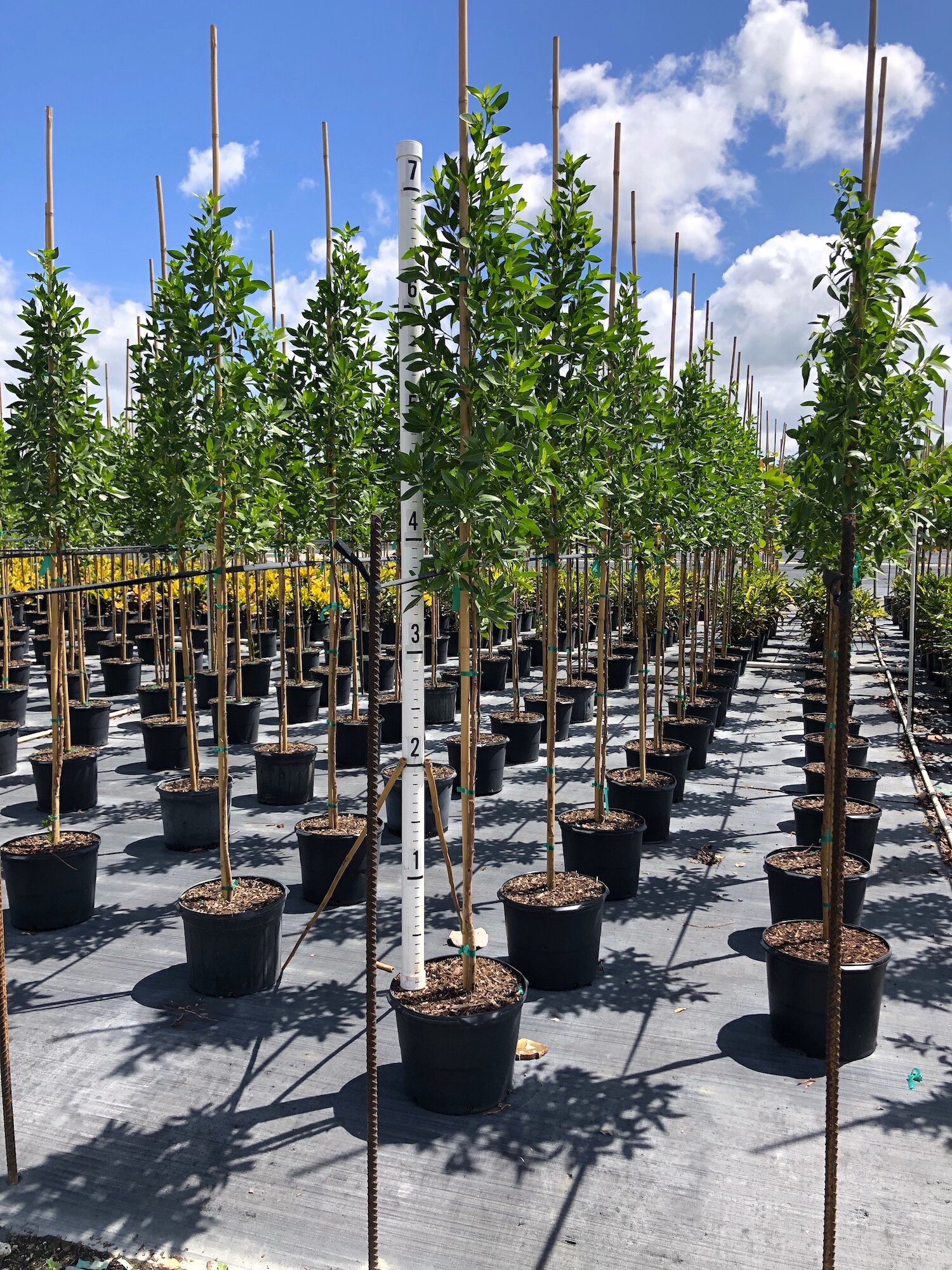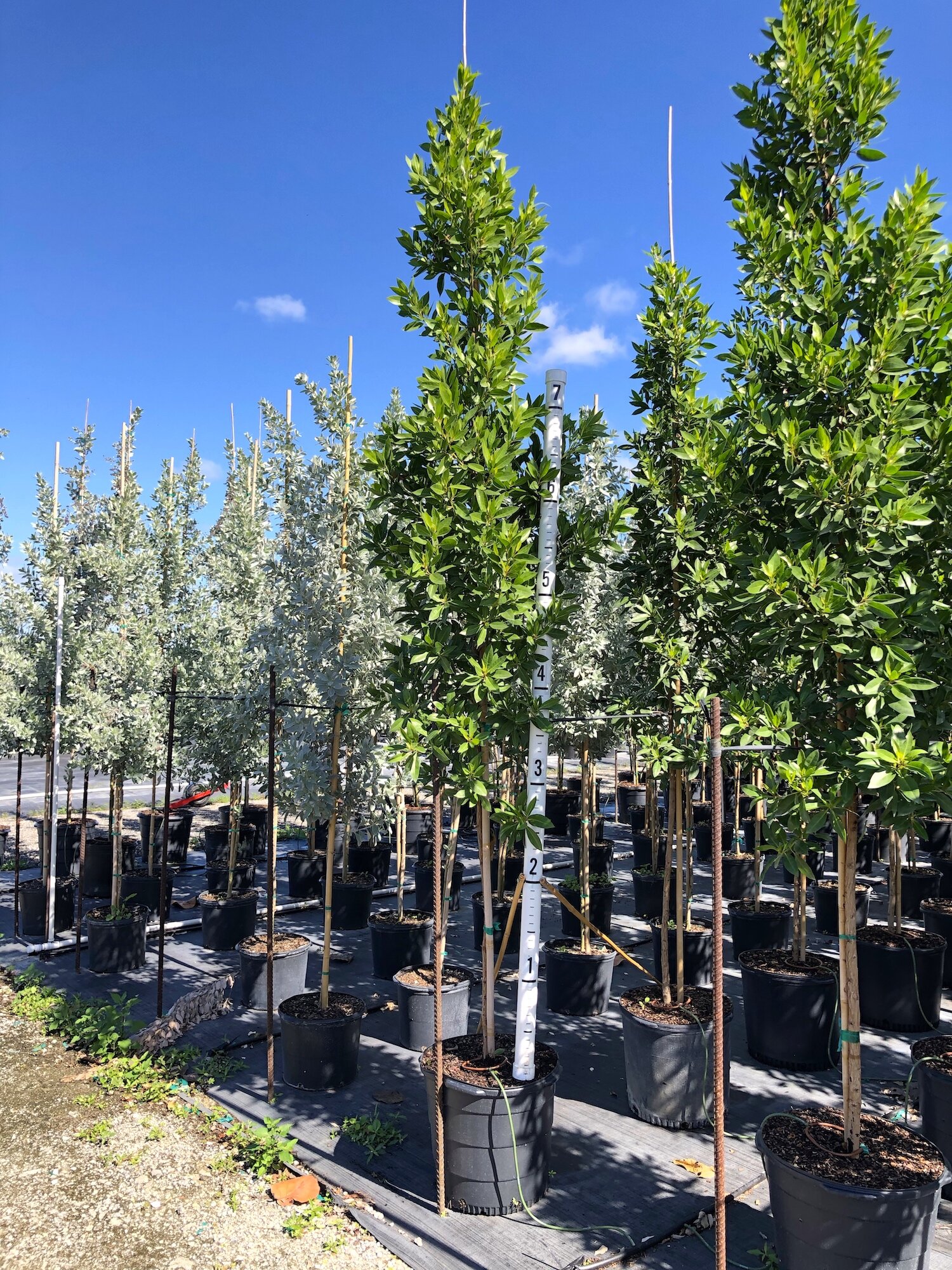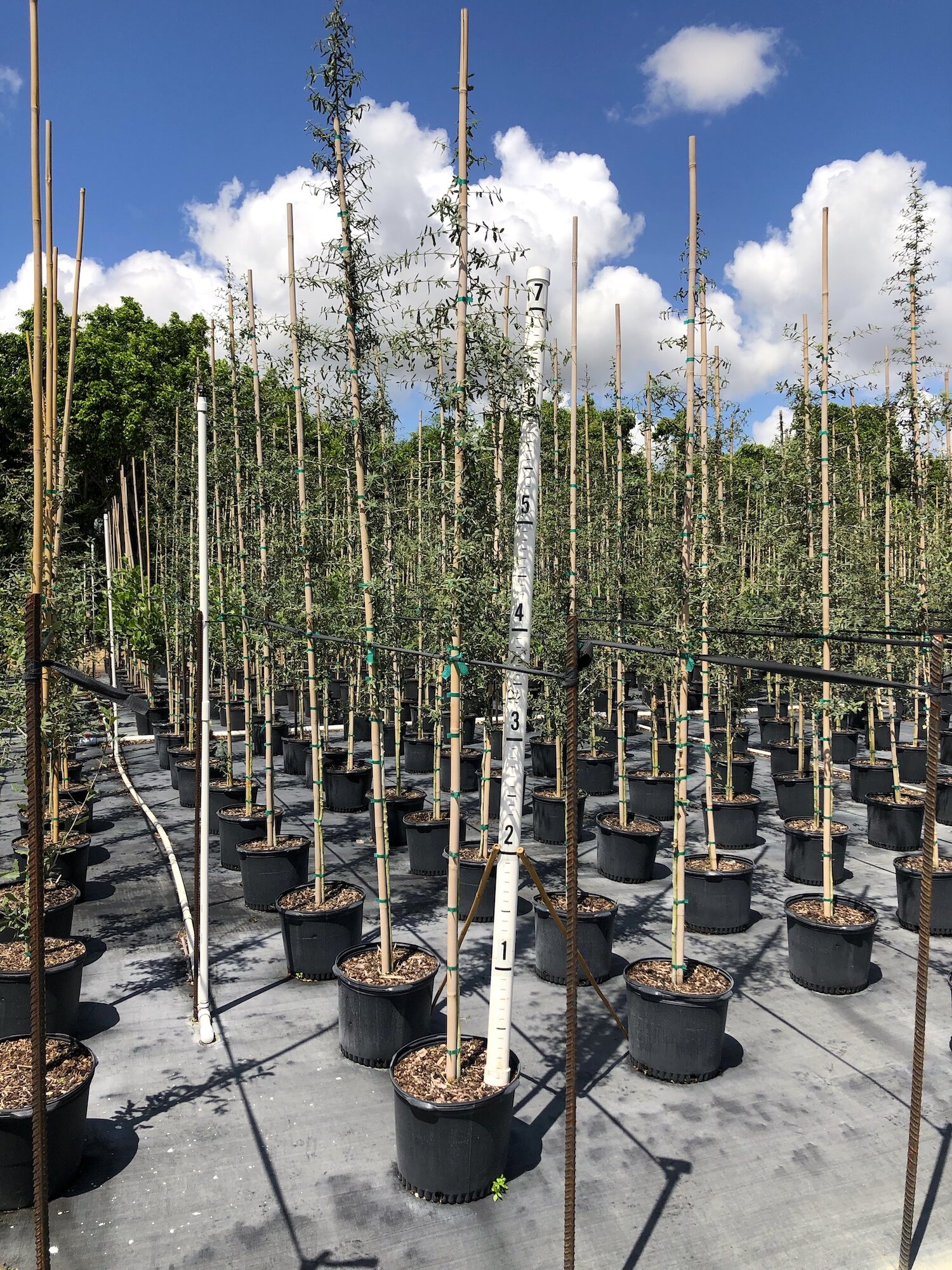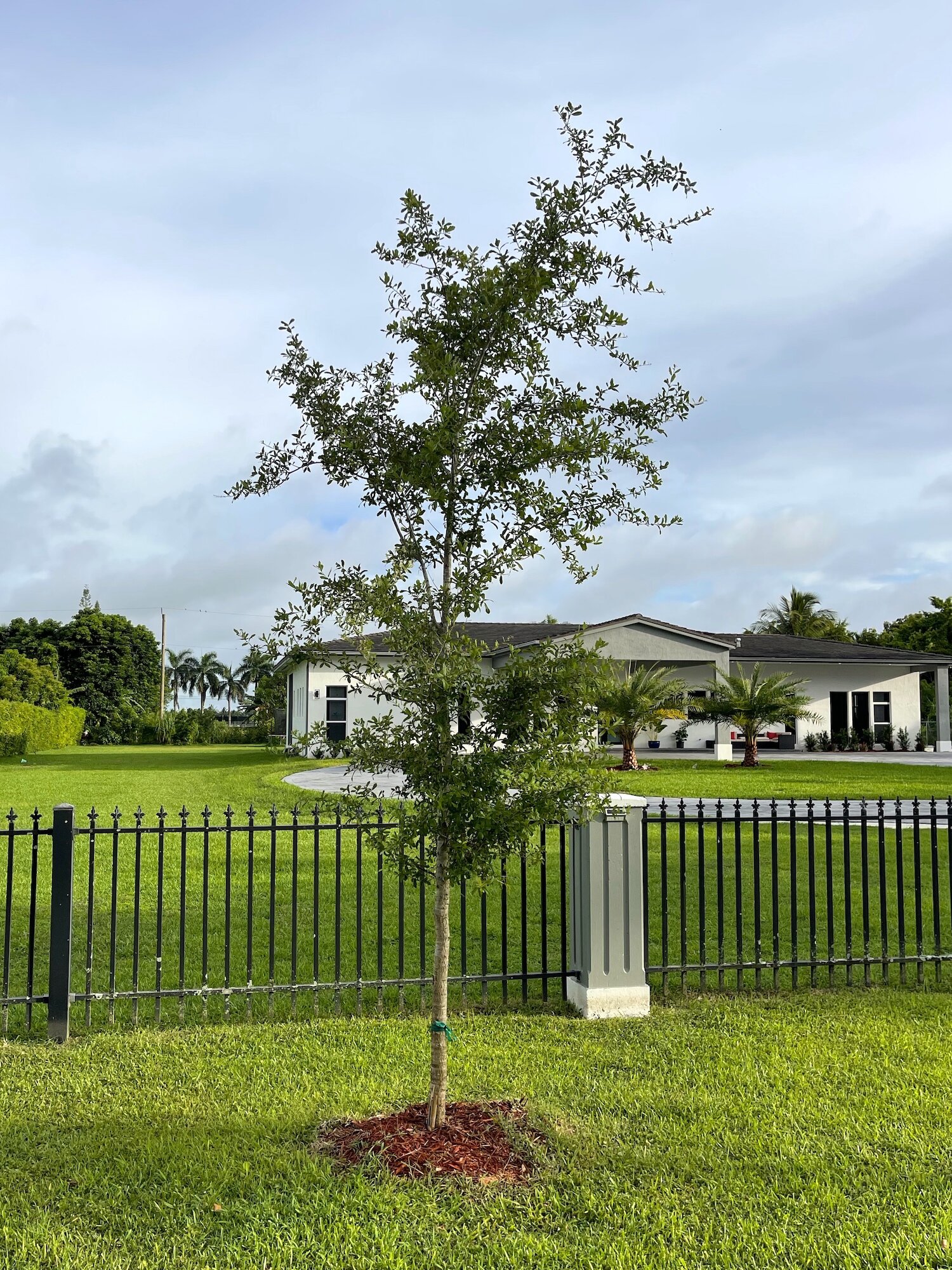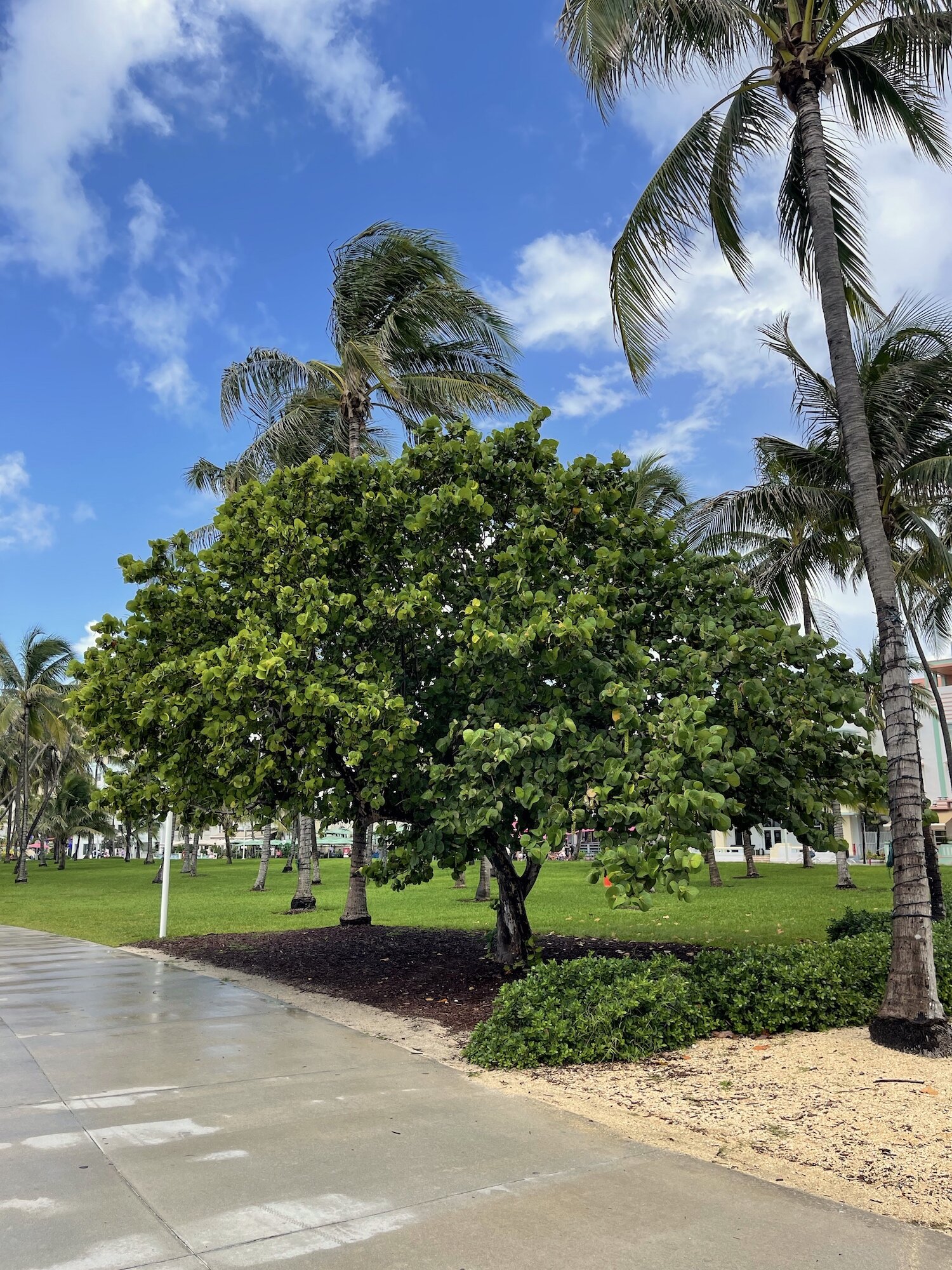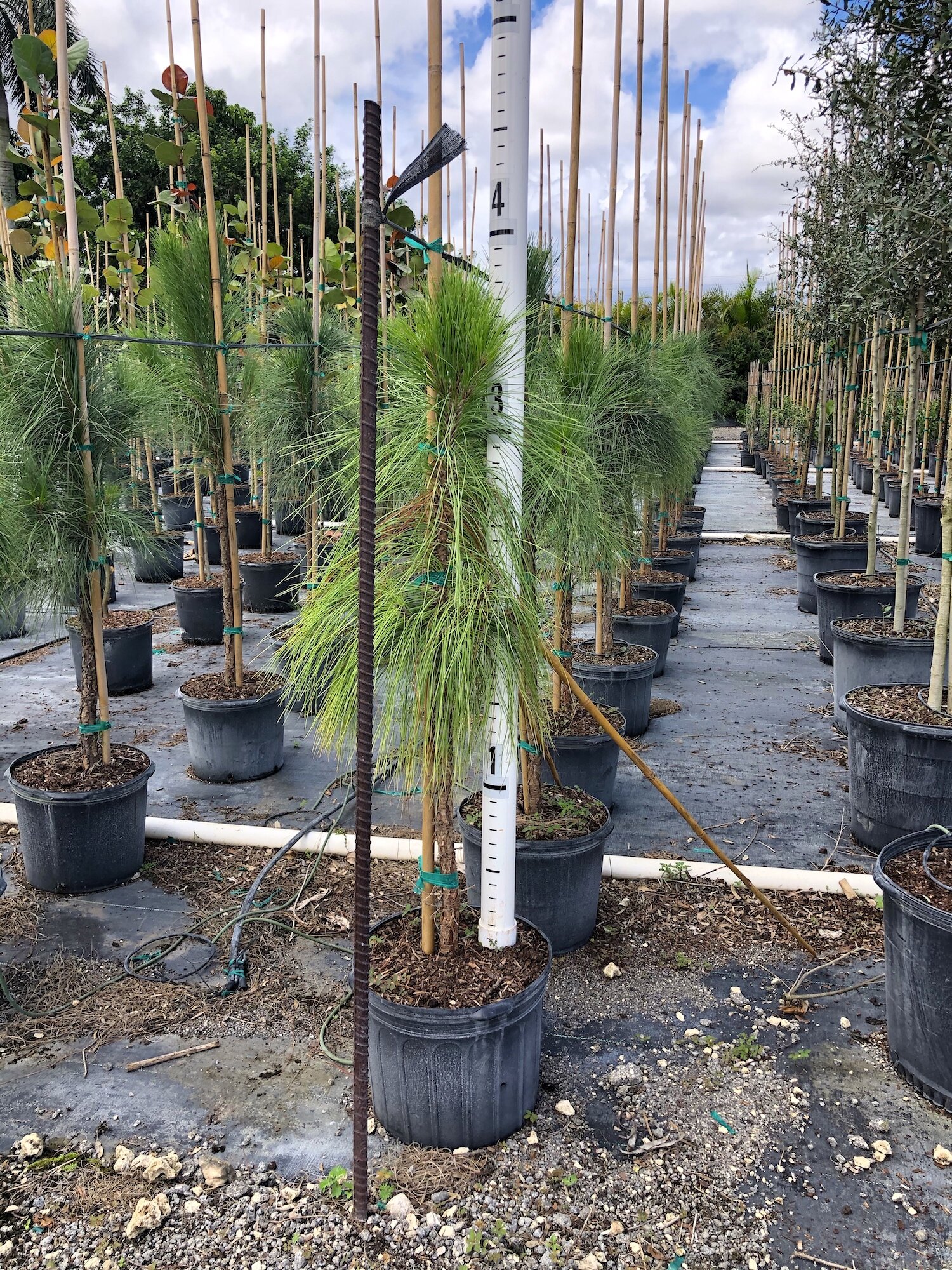Young Trees
Newly planted young trees from our tree farm. Green buttonwood (standard) in 7 gal. pots.
What are young trees?
Young trees spend less time in the tree farm prior to being sold and installed, saving the customer money and allowing us to free up space for growing new trees. Though not fully mature, young trees will do well in the landscape with proper anchoring and a trunk-supporting bamboo in place (included with all our trees).
We offer trees in 7, 15, 25 and 45 gallon pots, ranging from 5 to over 14 feet tall. Our carefully-curated variety of tree species will thrive in the Florida landscape and most are Florida natives.
Tree Specifications
Specification ranges provided for reference only. Please call or email to ask about current specifications of available inventory.
Why young trees?
Low cost: as a tree spends more time at the farm, its price increases. This is driven by the costs of taking care of the tree as it grows (fertilizing, trimming, spraying, weeding, etc.). Buying a young tree can bring significant savings of up to 80% compared to buying more mature trees.
Easy installation: young trees have a smaller root ball that requires digging a smaller and shallower hole, making it easier and quicker to install properly.
Custom shape: young trees are like a blank canvas with unlimited potential. As they grow, they can be trimmed and shaped to fit any need.
Our Trees
Clusia / Small Leaf Clusia (Clusia guttifera)
Commonly used as a multi-stem shrub for thick privacy hedges, Clusia has quickly become South Florida’s most popular hedge plant.
The main qualities that make Clusia great for hedges (white fly resistance, fullness, fast-growth and drought resistance), also make it an ideal ornamental tree.
While Clusia is not (yet) widely used as a single-trunk tree, this early trend is sure to give your landscape a modern, eye-catching look with its beautiful, round, and thick leaves.
Max. height: 15-20 ft.
Growth speed: fast
Drought resistance: high
Salt tolerance: high
Uses: shade, ornamental, residential, commercial, roadside
Florida native: no, but thrives in Florida
Clusia rosea / Pitch Apple (Clusia rosea)
Unlike it’s smaller-leaved cousin, the Clusia, Clusia rosea aka Pitch Apple is a widely used single-trunk tree in the Florida landscape.
A favorite of parking lot landscape designers due to its fast-growing, wide canopy. Once fully grown, its dark and thick leaves produce a refreshing shade underneath.
Clusia rosea can also be frequently seen used in roadside landscaping, where it thrives due to its drought resistance and shapeable canopy.
Max. height: 20-25 ft.
Growth speed: fast
Drought resistance: high
Salt tolerance: high
Uses: shade, ornamental, parking lot, commercial, roadside, residential
Florida native: yes
Green buttonwood (Conocarpus erectus)
One of the best-known and most widely used trees in South Florida is the green buttonwood, and this is not without reason. A fast grower, heavy brancher and pest resistant species that will look great in a wide variety of landscape uses.
Being a Florida native, this tree thrives in hot and humid conditions and rarely gets any diseases or pests. It grows very fast and produces a lot of branching after every trim, making it a great tree to shape.
Green buttonwood is mostly used in coastal areas since it not only resists but loves salty air conditions.
Max. height: 25-35 ft.
Growth speed: fast
Drought resistance: low
Salt tolerance: high
Uses: coastal areas, shade, ornamental, roadside, commercial, residential
Florida native: yes
Japanese blueberry (Elaeocarpus decipiens)
Although not technically a Florida native, Japanese blueberry behaves like one in many ways: it tolerates hot and humid environments, is salt tolerant, and resists common pests that can be found in the Florida landscape.
Landscape architects and homeowners love it because of its amazing branching and shapeability, resulting in beautiful specimens of different shapes. In the landscape, this beautiful tree can be seen shaped as a topiary, umbrella, or the traditional cone, among other more exotic shapes. It is also used sometimes for form elevated hedges.
Its woody trunk grows solidly, making it a strong, wind-resistant tree.
Max. height: 15 - 25 ft.
Growth speed: moderate
Drought resistance: moderate
Salt tolerance: moderate-high
Uses: shade, ornamental, residential, commercial, roadside, parking lot, elevated hedge
Florida native: no, but thrives in Florida
Live oak (Quercus virginiana)
Live oak, also known as the southern oak, is a widely-used tree in the Florida and southeastern United States landscape. It is a strong, woody evergreen that can grow up to 60 ft. or more and will last for generations.
This deep-rooting tree is among the favorites of roadside landscape designers as it will not damage adjacent roads or pathways, and a fully-grown live oak’s canopy can provide full shade to local roads.
Its shade and size potential also make the live oak a favorite of homeowners looking to provide cooling shade to large portions of their property.
Max. height: 40 - 60 ft.
Growth speed: moderate
Drought resistance: moderate
Salt tolerance: moderate
Uses: shade, ornamental, residential, commercial, roadside, parking lot
Florida native: yes
Seagrape (Coccoloba uvifera)
Seagrape is a commonly sighted plant along the Florida shorelines. It has traditionally been widely used in the landscape as a hedge shrub when height is a priority. More recently, the single-trunk tree version has gained popularity for commercial and residential landscapes due to its fast growth and resiliency.
A mature seagrape plant produces hundreds of fruits (seagrapes) each year, allowing it to propagate naturally and making it an ideal plant for land remediation projects.
Our seagrape trees are carefully trained along a supporting bamboo to ensure a straight single trunk and a beautiful canopy. Once planted in the landscape, routine trimming will help it become a full, branchy tree that can be shaped in any way desired.
Max. height: 20 - 40 ft.
Growth speed: fast
Drought resistance: moderate
Salt tolerance: high
Uses: coastal areas, shade, ornamental, commercial, residential, roadside
Florida native: yes
Silver buttonwood (Conocarpus erectus ‘Sericeus’)
With its silver, eucalyptus-like leaves and shoreside resiliency, silver buttonwood has earned one of the top spots in the Florida landscape; not only as a tree, but also as a very efficient hedge material.
Being a Florida native, this tree thrives in hot and humid conditions and loves the salty, shoreside breeze. It’s not a fast grower and reaches moderate heights, making it ideal for ornamental or sidewalk use.
Max. height: 20-25 ft.
Growth speed: moderate
Drought resistance: low
Salt tolerance: high
Uses: coastal areas, shade, ornamental, roadside, commercial, residential
Florida native: yes
South Florida Slash Pine (Pinus elliottii densa)
Slash pine was once a common sight in the natural Florida landscape but development and logging have reduced its footprint significantly in recent years.
Due to its uniqueness, beauty, and benefits of being a native species, it is widely used as an accent tree for ornamental landscape purposes and also in natural habitat remediation projects.
Slash pine will grow tall, with some irregular branching every few feet. Its trunk and branches are full of green needle-like leaves that, after falling, create a nice pine straw carpet underneath.
Max. height: 40 - 50 ft.
Growth speed: moderate
Drought resistance: high
Salt tolerance: moderate
Uses: shade, ornamental, residential, commercial, remediation, roadside
Florida native: yes













